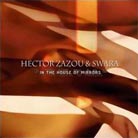This review page is supported in part by the sponsors whose ad banners are displayed below |
 |
Class A/B vs. D: Albedo's attractively styled Italian HL2.2 speakers with their 86dB sensitivity and Accuton drivers load a small 5-inch midrange into a cross-sectionally shrinking transmission line that's tuned to 50Hz and linearized by paralleled Helmholtz resonators. This was the perfect transducer to measure drive. The previous speakers' flat 6-ohm impedance below 1,000Hz makes them perfectly suitable even for 8-wpc 300B SETs without NFB. Their pricing meanwhile positions them outside Hexateq's target audience. The Albedos' pricing and load meanwhile were far more realistically matched. Amp comparators in this more muscular context became Hegel's H-100 and April Music's Stello Ai500 integrateds. Both were run via their bypass inputs and through the same Esoteric C-03 preamp as the Belgians.
|
|
|
Where the Hypex monos played it more relaxed and softer of contour, the Ai500 had sharper overall articulation or grippiness like the F5 earlier (the Korean's operating temperature suggests relatively high bias into class A before the transition occurs). And it was rerun time also for subjective treble clarity. Again the Belgians were more subdued and not as illuminated. When it came to bass power, this time they found themselves outstripped by the sleek Stello which had even more profundity in the depths. More importantly however, there were no indications that the minis suffered any kind of drive shortage. Their sonic character transferred intact from the previous experiments and grafted itself onto the lithe Italian speakers.
|
 |
 |
Compared to the Norwegian class A/B machine with its proprietary SoundEngine™ feed-forward error correction (not conventional feedback but claimed to avoid class A/B crossover distortion to give the sonic benefits of class A without its thermal inefficiency), the sonic gestalt was closer in how image outlines were softer and the participatory focus shifted backwards from the listening seat. In that, it was close to a tie. Where the Hegel differed again was in how it articulated on-string action of plucked attacks and concomitant harmonic halos better. It's something for which the stupendous Hector Zazou & Swara recording In the House of Mirrors [Crammed, 300583] is a most excellent test. As some of the best recorded ethnic strings in my library, tracks 3 and 4 get played often.
|
|
|
|
|
 |
At this juncture, the emerging picture had a pair of amplifiers clearly voiced softer and mellower than the NuForce Reference aesthetic, with a dense fleshy sound set into a deep soundstage. Due to diminished air and limited upper harmonic elucidation but powerful and extended bass as the counterweight, this virtual stage wasn't ultimately sorted/separated. A side effect was a downplaying of the angular, spiky aspects with their associated startle or jump factor. Audiophiles call that relaxation or occasionally, organic. In an age where resolution ought to be spelled with an 'H' for hyper, these choices relate to what has driven many into tubes. It's not the same—tubes sound different— but a shared gestalt which has more to do with feel.
For the finale, the Belgian super sleuth Poirot always assembles the suspects for a bit of hectoring before the final reveal. Resentfully accused characters occasionally protest. "Isn't it time you picked on someone your own size, Poirot?" In our context, someone approaching the Hexateqs' size would be Bel Canto's S300 ICEpower™ amplifier |
|
 |